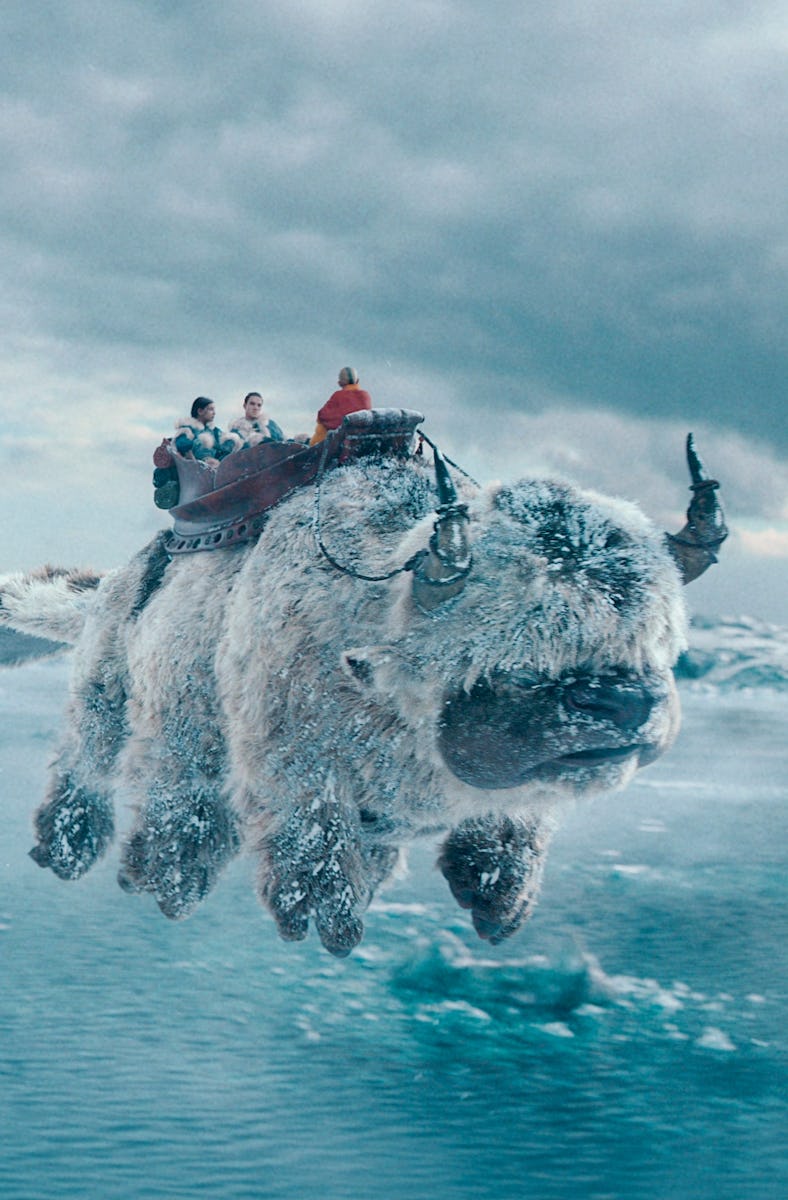What Avatar: The Last Airbender Reveals About Live-Action Adaptations
Maybe this is the best we can hope for.

There's been a lot of both anticipation and concern surrounding the premiere of Netflix's Avatar: The Last Airbender. The series, a live-action adaptation of the animated TV show of the same name, is one of the most high-profile projects of its kind, but fans haven't ever forgotten the disappointment they felt when M. Night Shyamalan's abysmal Last Airbender film hit theaters in 2010. Consequently, when Avatar creators Michael Dante DiMartino and Bryan Konietzko left the Netflix series in 2020 over creative differences, many became understandably worried that the project was doomed to be similarly disappointing.
Now that its first season has premiered, though, it seems safe to say that Netflix's live-action Avatar: The Last Airbender series is nowhere near as bad as the Shyamalan film that came before it. The show isn't nearly as good as the original Last Airbender TV series, either. It is, instead, an endearing but undeniably imperfect adaptation of one of the most impressive and beloved animated series of recent memory.
While watching it, one might get the sense — as this writer did — that its quality is the highest viewers should hope for from live-action adaptations of pre-existing anime shows. The original Avatar: The Last Airbender notably isn't an anime series because it wasn't made in Japan, but it is deeply indebted to Japanese animation. Even more importantly, Netflix's take on it boasts many of the same issues as another, recent live-action anime adaptation.
In many ways, Netflix’s Avatar: The Last Airbender looks exactly like a live-action adaptation of an anime-adjacent TV series.
The eight-episode first season of Netflix's Avatar: The Last Airbender is a mixed bag. On the one hand, the series frequently looks better than it should, given the VFX demands placed upon it. On the other, there are entire kingdoms, backgrounds, and action sequences throughout the season that look jarringly fake and ugly, and they make falling in love with The Last Airbender's fantasy world a more difficult task than it ever was in the original series. Similarly, while the Netflix show does an impressive job of compressing the story of Avatar: The Last Airbender's 20-episode debut season from 2005 into eight hours, several of its storylines stick so closely to their original, cartoonish tone that they don't translate well to live-action (we're looking at you, King Bumi).
The new series' adherence to its source material's heightened tone and aesthetic hurt it in more ways than one. Characters like Princess Yue (Amber Midthunder), Pakku (A Martinez), and the aforementioned Bumi (Utkarsh Ambudkar) are, for example, brought to life using distractingly bad wigs and layers of prosthetic makeup just so they can look as close to their animated counterparts as possible. While that's an admirable effort, it's hard to watch the final two episodes of Avatar: The Last Airbender's first season without feeling like the show would have been better off had it just let actors like Midthunder and Martinez look a little more like their actual selves.
For all of its flaws, the Netflix series still frequently replicates the combination of lighthearted fun and epic action that made the original Avatar: The Last Airbender animated show stand out so much. Many of the series’ cast members — namely, Dallas Liu, Gordon Cormier, Paul Sun-Hyung Lee, and Ken Leung — also manage to turn in memorable performances as characters whose existing legacies may have once seemed too great for any new actors to make much of a mark portraying. These highs and lows are, notably, many of the same present in Netflix's live-action adaptation of One Piece. That show, like The Last Airbender, has the capacity to be both gorgeous and appallingly ugly, as well as alternately fun and cringey.
Netflix’s Avatar: The Last Airbender isn’t a stunning success nor a complete misfire.
It's not hard to see why Netflix's live-action Avatar: The Last Airbender and One Piece adaptations have so much in common. Both are based on animated shows with outrageous senses of humor and similarly enormous, sweeping adventure stories. The two Netflix series are also what fans often want adaptations of their favorite properties to be, which is faithful. When you take all of that into account, the strongest and weakest elements of both shows seem inevitable.
In the case of Avatar: The Last Airbender, the series’ world and story are simply too big and too fantastic for even a TV series as expensive as it to pull off all of its many CGI-driven moments. Several of its storylines are also inherently too cartoonish to work within a live-action setting. It is, therefore, difficult to imagine a better version of Avatar: The Last Airbender’s first season that doesn't alter multiple things that longtime fans would likely be unhappy to see cut or changed.
Does that mean Netflix's Avatar: The Last Airbender is a perfect adaptation of its source material? Definitely not. It may, however, be the best kind of imperfect that both Western animation and anime fans alike should expect moving forward from any live-action adaptations of their favorite shows.